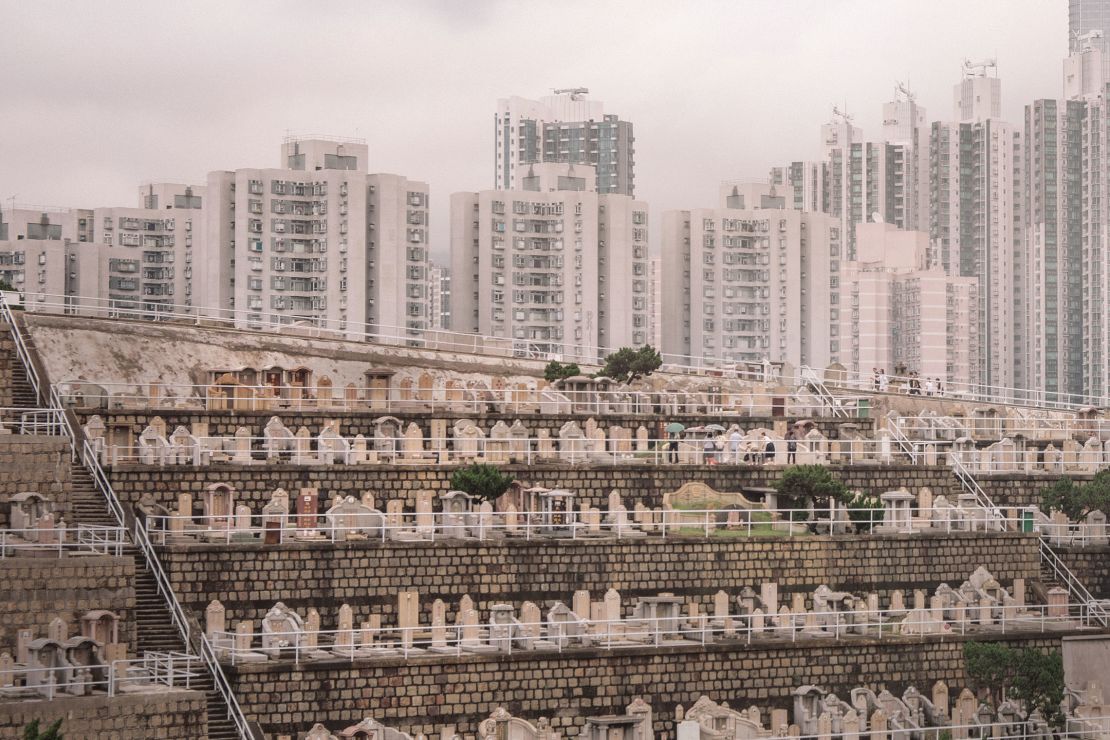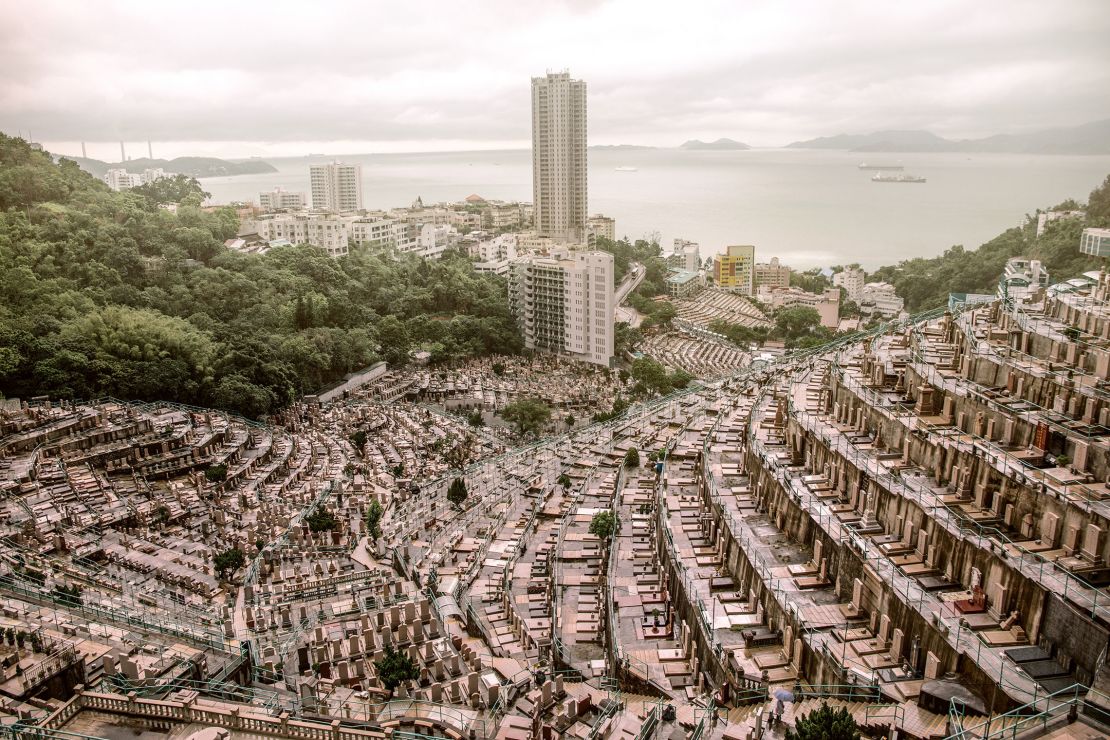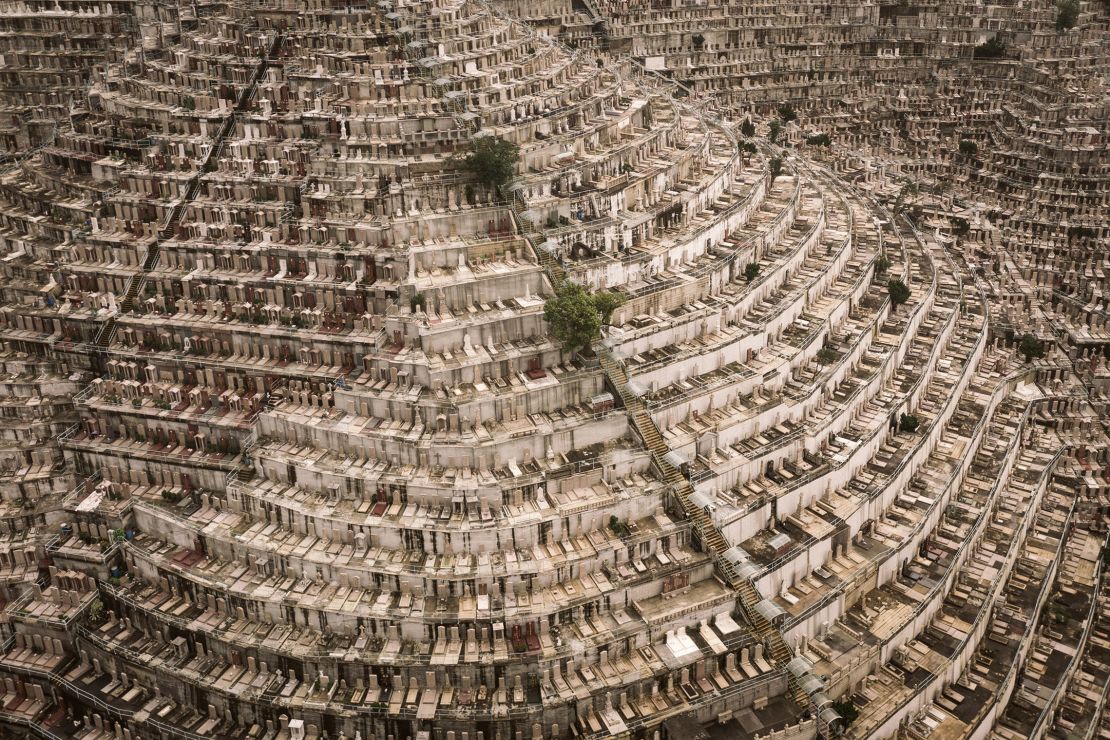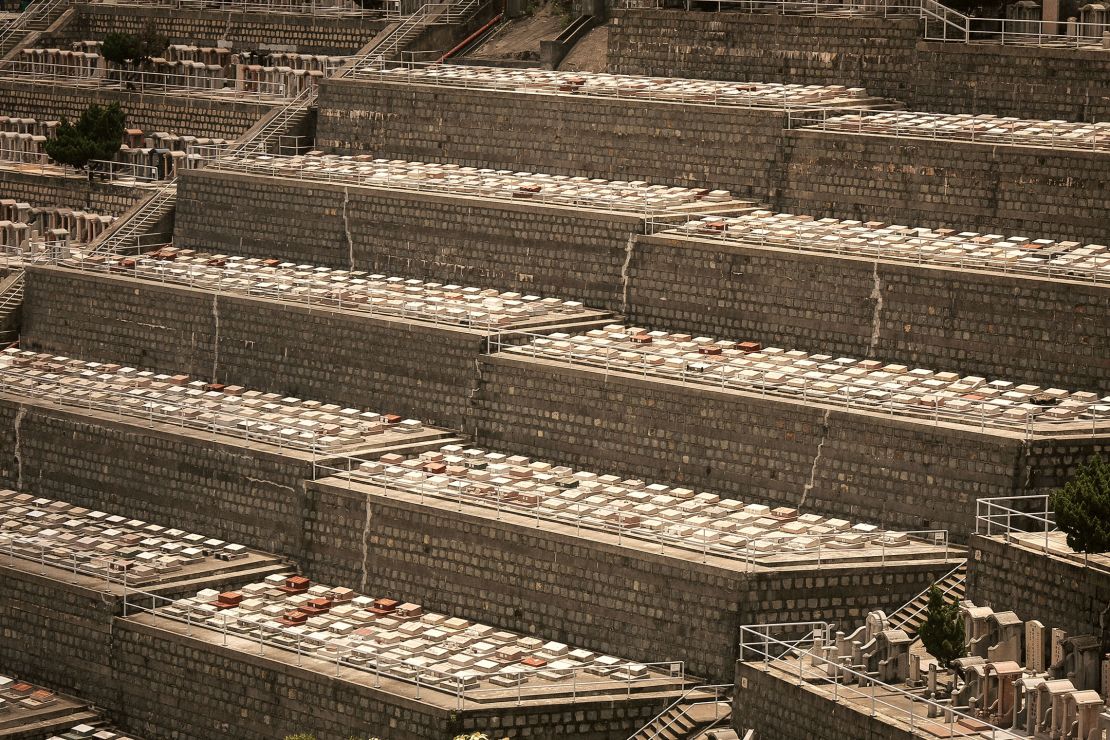Endless rows of stone slabs line Hong Kong’s hillsides. Just a few spots of green are visible amid a vast expanse of gray blocks engraved with Chinese characters.
These slopes are home to thousands of Hong Kongers – or their earthly remains, at least.
For his new photo series “Dead Space,” photographer Finbarr Fallon visited nearly all of the city’s cemeteries, capturing the sheer density of graves and the mountainous urban terrain surrounding them.
Some of his most striking photos show cemeteries in the foreground, their small rectangular gravestones lined up in neat ordered rows, while skyscrapers loom behind.
“I was trying to portray that relationship between the living and the dead in one composition,” said Fallon, who used a telephoto zoom lens to compress the foreground and background together to create a “flattened” effect.

He also used a drone to take aerial shots, helping to show the striking magnitude of the cemeteries. In some shots, visitors climbing the steep hillside stairs appear like tiny specks in a sea of gravestones.
“I really wanted to show the monumentality (and) how it’s almost like a landscape, beyond the scale of a building – so juxtaposing the scale of the human against this enormous landscape,” Fallon said in a phone interview.
Fallon, who lives in Singapore, started work on the project after catching sight of a cemetery in Wan Chai district while on vacation in Hong Kong. Intrigued by how the limits of physical space can shape how we live and die, he made several more trips to the city over the next five years to photograph what he calls the city’s “changing culture of death.”
Shortage of burial space
In the UK, where Fallon hails from, cemeteries are often flat, green and spacious, like manicured gardens, the photographer said. In Hong Kong, however, conditions for the dead reflect the realities of the living – cramped and vying for space.
Home to 7.5 million people, Hong Kong is one of the world’s least affordable cities, with sky-high prices for houses and land. This means that people may not only struggle to afford a home during their lives, but after them as well.

Private cemeteries in the city currently list permanent plots for as much as 280,000 Hong Kong dollars ($36,000), and Hong Kong University associate professor Amy Chow, who researches aging and death, says they can sell for almost four times that. Spots in public cemeteries can be cheaper, but practically all the permanent graves are already occupied, leaving only reusable plots that are subject to mandatory exhumation after just six years.
The vast majority of Hong Kongers now choose to cremate their deceased loved ones instead. But even then, it can be a struggle to secure a place in a columbarium (a complex housing urns in small compartments), with thousands of families on waiting lists for a space only big enough for one or two urns. People can wait up to seven years for an opening, Chow said.

The mood and palette of Fallon’s photos seem to reflect the unease surrounding death in Hong Kong. His photos are muted and hazy, almost melancholic, and deliberately shot on overcast days so that the overall aesthetic “gels with the subject matter at hand,” as he put it.
In Singapore, too, space is running out, the photographer said. Thousands of graves have been exhumed as the government builds highways and new housing over old cemeteries.
“I think we’re going to (see fewer) physical manifestations of death due to the space constraints of these increasingly urban spaces,” said Fallon, pointing to new virtual cemeteries in Japan that allow people to pay respects to the dead online. “People have to move on from their traditions and practices and accept that the city is changing this way.”
Changing traditions and beliefs
The invention of virtual cemeteries and the growing preference for cremation reflect the changing culture around death in Asian metropolises like Hong Kong, Singapore and Tokyo. But diminishing space may pose a threat to traditional beliefs and customs like the Qingming festival, or Tomb-Sweeping Day, an annual Chinese holiday which sees people visiting and honoring their ancestors’ graves.
“A lot of Asian cultures practice these rituals,” said Fallon. “But looking toward the future, I think cities are going to have to embrace dramatic shifts in the way they deal with the dead.”
These rituals can carry heavy significance in East Asian cultures, especially because of the widespread and highly-valued Confucian virtue of filial piety – honoring and caring for your parents.
“Finding a permanent place for your ancestors is a way to show respect and filial piety,” said Chow, suggesting that people may feel guilt and shame if they are unable to secure a graveyard or columbarium spot for deceased family members.
Another long-standing belief in Chinese culture is that the dead should be laid to rest on mountains facing the sea, for positive feng shui. With few such spots available, or affordable, some Hong Kongers are choosing to keep the ashes of their loved ones at home – which goes against tradition.

Families who do so may find it more convenient, Chow said, as they can pay their respects whenever they like, instead of traveling to a cemetery. This is one way in which a lack of space is “changing the culture” around death, she added.
“In the past, (people) wanted to live in a big house with a nice view,” Chow said. “But we cannot – (so) they’ll think: at least they have a house (at all). This kind of attitude also molds their expectations for a place after death. If the living places are like this, they also give up some expectations for (their) place of death.”
But while Fallon hopes to explore these cultural shifts through his work, the appeal of Hong Kong’s graveyards was also aesthetic. As an architectural photographer, he said he was drawn to the cemeteries’ “spatial typology.”
“The construction method … contours the landscapes by creating these concrete tiers that are kind of monumental in scale,” he said. “As an architectural form … the existing terrain is expressed through these terraces, and to experience these terraces on a personal level is very interesting.”













